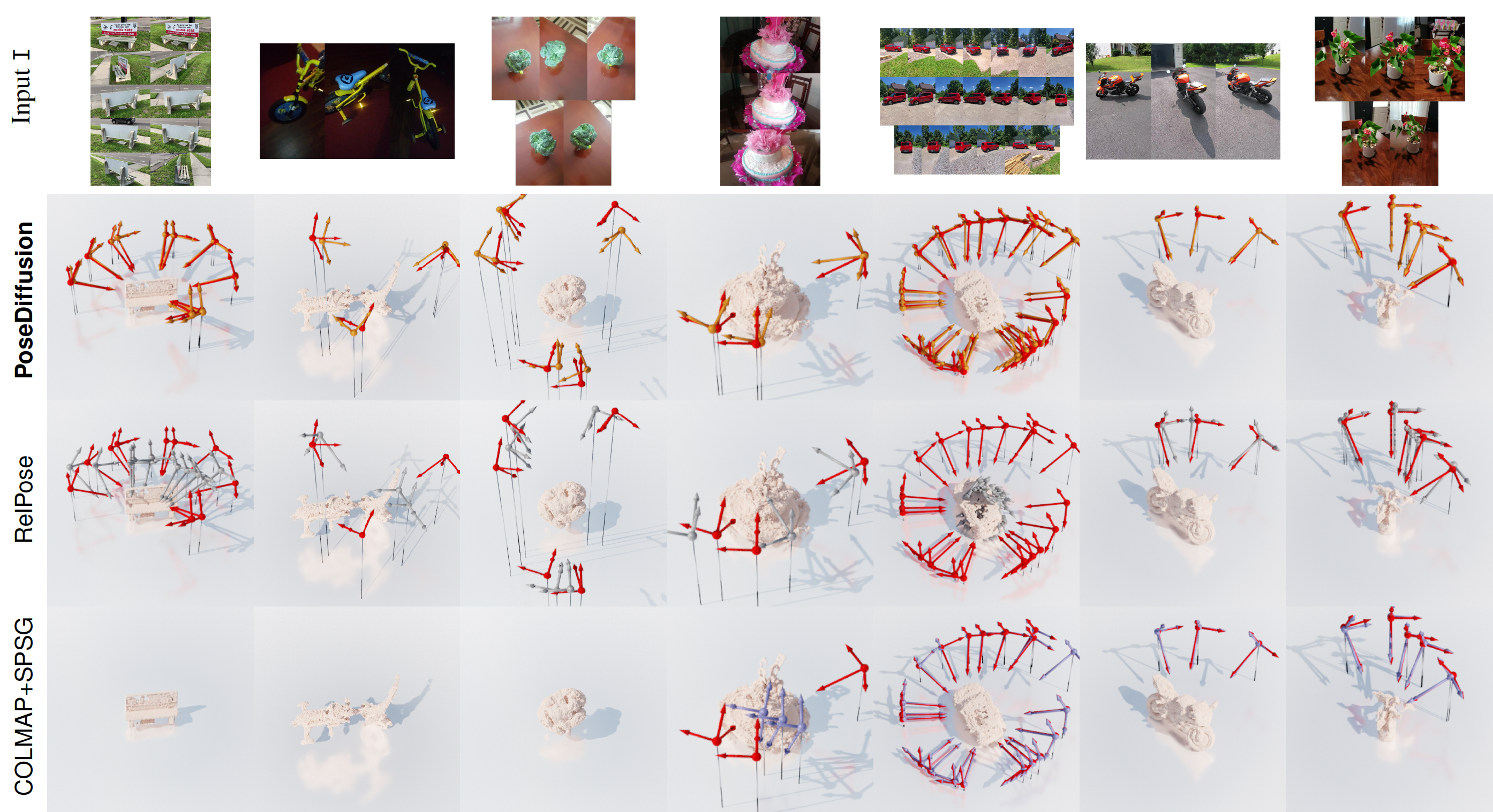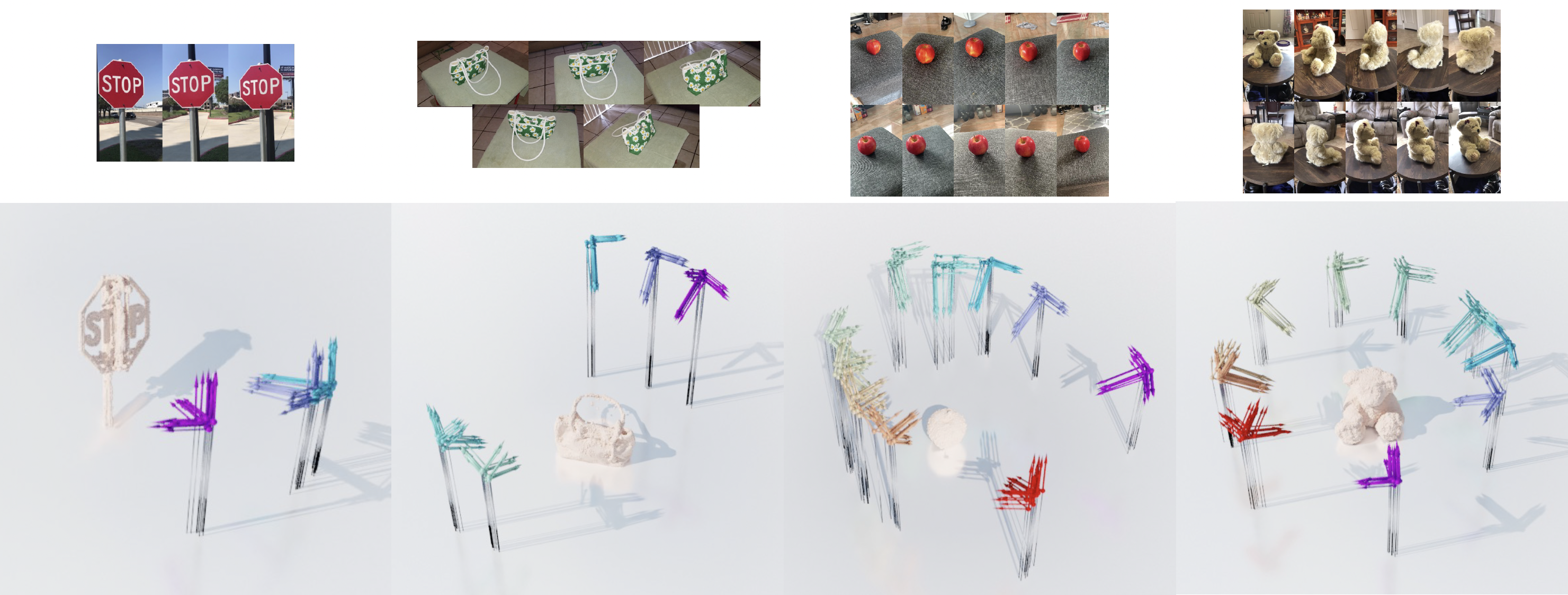Framework
We propose to formulate the Structure from Motion (SfM) problem inside a probabilistic diffusion framework. Training is supervised given a multi-view datasets of images and camera poses to learn a diffusion model \(D_\theta\) to model \(p(x |I)\). During inference, the reverse diffusion process is guided by optimizing the geometric consistency between poses via Sampson Epipolar Error.

Qualitative Comparison
We provide the qualitative samples of pose estimation on the CO3Dv2 dataset. Given input images I (first row), our PoseDiffusion (2nd row) is compared to RelPose (3rd row), COLMAP+SPSG (4th row), and the ground truth. Missing cameras indicate failure.

We also provide a video featuring the observation with a sweeping, fly-around viewpoint.
More Visualization of Sampling Iterations
Novel View Synthesis
To illustrate the quality of our camera pose estimation, we train NeRF models with the extrinsics and intrinsics predicted by our method, with the results shown below.
Camera Pose Uncertainty
One inherent advantage of utilizing the diffusion model for camera pose estimation is its probabilistic nature. It is well-known that few-view camera pose estimation is a non-deterministic problem, where multiple pose combinations may be all reasonable for a set of images. We provide a visualization below to verify that our method can provide several reasonable pose sets \(x\) for the same input frames \(I\). The cameras predicted for the same frame are indicated with identical colors.
